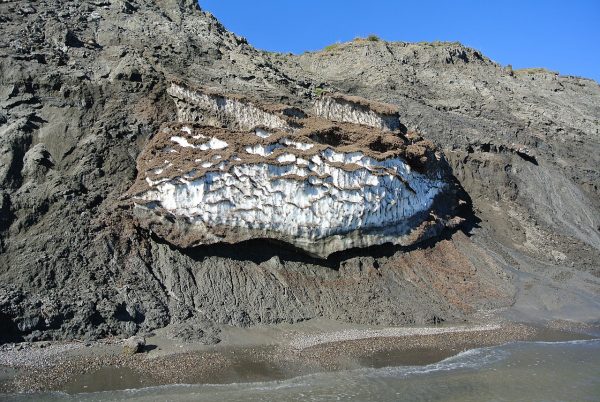Thawing Permafrost Could See Anthrax & Prehistoric Diseases Return
In 2016 over twenty people were infected by a disease in the Yamal Peninsula located in the Yamalo-Nenets Autonomous Okrug of northwest Siberia, Russia, above the Arctic Circle.
Hundreds were hospitalized with symptoms and a twelve year old boy died from anthrax that had been hidden under the permafrost for over seventy five years.
With an abnormally high melting level of permafrost an infected deer carcass was uncovered which in turn infected over two thousand live reindeer causing an evacuation of some families, according to npr.org.
Permafrost is frozen soil which is known to extend as far as one thousand feet deep and is melting at a rapid rate all along the southern arctic borders revealing astonishing things.
While the top layer freezes and thaws along with the seasons, the thawing is starting earlier and going deeper into the ground.
Ancient burial sites and bodies as well as extinct animal bones and unknown plant materials are being exposed which is incredibly fascinating but the conditions that allow for such good preservation also create ideal conditions for bacteria to rest.
Once thawed, the anthrax spores are spread by the wind into the water supplies and soil.
Microbiologist, Birgitta Evengard, from Umea University in Sweden expects even more cases of anthrax to spread because of the melting ice.
The difficulty of burials in the frozen ground of Siberia in the early 1900s caused anthrax infected animals to be put into shallow graves that are now thawing each summer with thousands of dead animals exposed.
According to scientificamerican.com, Jean-Michel Claverie, head of the Mediterranean Institute of Microbiology and a professor at Aix-Marseille University in France along with Dr. Chantal Abergel.
Research Director at Centre National de la Recherche Scientifique and Director of the Genomics and Structural Information Laboratory published a paper on two live infectious viruses from a portion of thirty thousand year old Siberian permafrost.
30000 year old wolf head preserved in the Siberian permafrost pic.twitter.com/XCOMagzT0f
— The Human Experience (@thehumanxp) October 17, 2019
While these viruses are not harmful to humans their research highlights the fact that no one knows what could be buried in the ice and possibilities of smallpox, Spanish influenza and even bubonic plague viruses could be released.
Over the years, humans have developed resistance to most modern virus strains but no longer harbor immunity from diseases that are mostly extinct.
Nor do we know what type of reactions would happen if these diseases were treated with modern antibiotics. Would the reactivated stains develop an immunity to them as many virus strains have?
BBC.com/earth tells us that Claverie claims viruses from long-extinct species like Neanderthals and Denisovans, both of which settled in Siberia, may be discovered and, “The possibility that we could catch a virus from a long-extinct Neanderthal suggests that the idea that a virus could be ‘eradicated’ from the planet is wrong and gives us a false sense of security.”
On how Siberia is “sinking” due to warming, permafrost melting and the earths force a rethink about traditional lives. pic.twitter.com/WwIXuBKYtg
— Keerthik Sasidharan (@KS1729) October 20, 2019
Claverie has been studying the DNA found in the layers of permafrost for over five years and has found DNA sequences from viruses such as herpes but had not yet found smallpox at the time of his report.
According to telegraph.co.uk, scientists found smallpox DNA on bodies from the permafrost in Russia but no details are given.

Sakha Republic biologist, Boris Kershengolts from Yakutia is worried that viruses could be spread even farther by explosions of methane hydrates occurring in Yakutia.
When the methane thaws it expands until an explosion occurs causing large craters and small hills of which over seven thousand have been found in the area.
Another Article From Us: Mysterious new landforms appearing in Siberia
The expulsion of the methane in turn speeds up the warming. According to Kerhsengolts, “If the area of these emissions overlaps with the burials of animals or humans who died from diseases in previous centuries, these spores and pathogens could spread over a huge area.
It would be a disaster not just for the Arctic, the catastrophe could exceed Chernobyl.”





